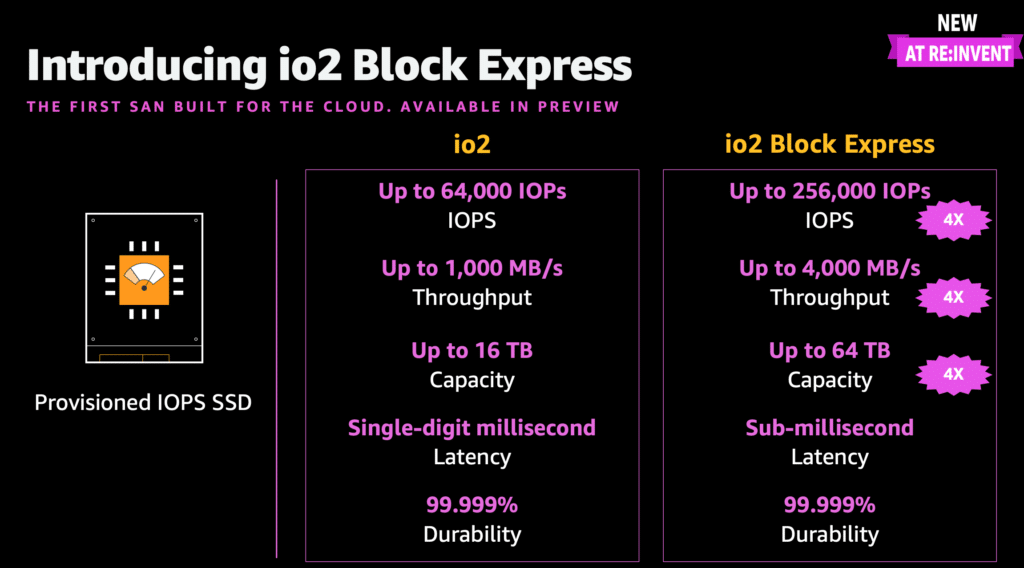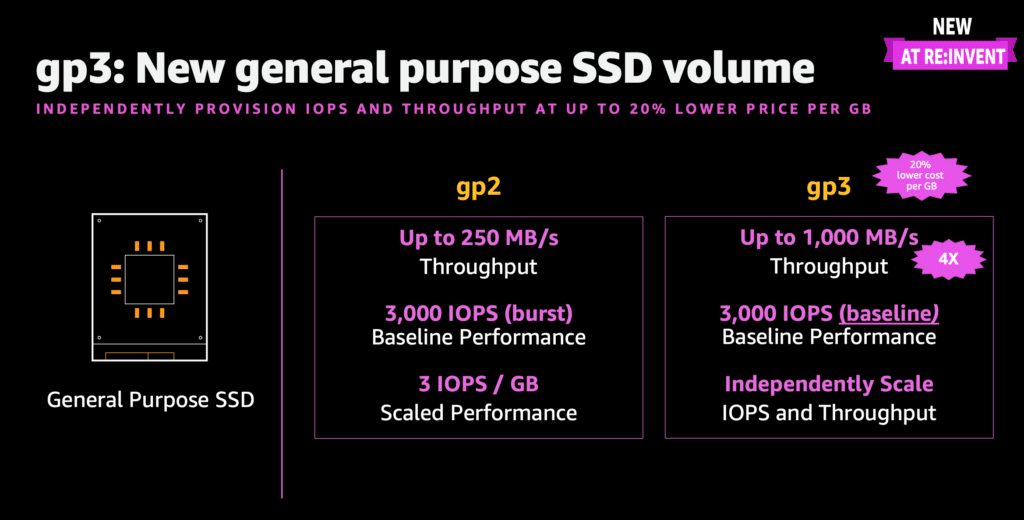AWS may not have built the cloud, but they’ve driven more cloud adoption than anyone else since they launched S3 object storage buckets in 2006, nearly 15 years ago. Since then, AWS has listened to their customers when it comes to launching new features. In fact, 90% of anything new in AWS comes directly from customers themselves. This holds true from edge data collection with the new AWS Snowcone, all the way up to the latest EBS io2 Block Express volumes, what Amazon calls the first SAN built for the cloud.
AWS may not have built the cloud, but they’ve driven more cloud adoption than anyone else since they launched S3 object storage buckets in 2006, nearly 15 years ago. Since then, AWS has listened to their customers when it comes to launching new features. In fact, 90% of anything new in AWS comes directly from customers themselves. This holds true from edge data collection with the new AWS Snowcone, all the way up to the latest EBS io2 Block Express volumes, what Amazon calls the first SAN built for the cloud.
In early December AWS announced these and many more enhancements. On this podcast, I interview Mai-Lan Tomsen Bukovec, who knows these AWS services inside and out. We cover some of the history that leads AWS to where it is today and dive relatively deeply into the new SAN offering, gp3 SSD instances, and much more.
AWS Re:Invent 2020 Highlights
- Amazon EBS io2 Block Express volumes – Delivers the first SAN built for the cloud, with up to 256,000 IOPS, 4,000 MB/second throughput, and 64 TB of capacity (a 4x increase across all metrics compared to standard io2 volumes). Available in preview.
- Amazon EBS Gp3 volumes: Next-generation general purpose SSD volumes for Amazon EBS. Offers 3,000 IOPS and 125 MB/second of throughput with the ability to provision up to 16,000 IOPS and 1,000 MB/second peak throughput (a 4x increase over Gp2 volumes) at a 20% lower price per GB of storage than existing Gp2 volumes. Available now.
- Amazon S3 Intelligent-Tiering automatic data archiving: Two new tiers (Archive Access and Deep Archive Access) help customers further reduce their storage costs by up to 95% for objects rarely accessed by automatically moving unused objects into archive access tiers. Available now.
- Amazon S3 Replication (multi-destination): New capability gives customers the ability to replicate data to multiple S3 buckets in the same or different AWS Regions, in order to better manage content distribution, compliance, and data-sharing needs across Regions. Available now.
Subscribe to our podcast:
Engage with StorageReview
Newsletter | YouTube | LinkedIn | Instagram | Twitter | Facebook | RSS Feed


